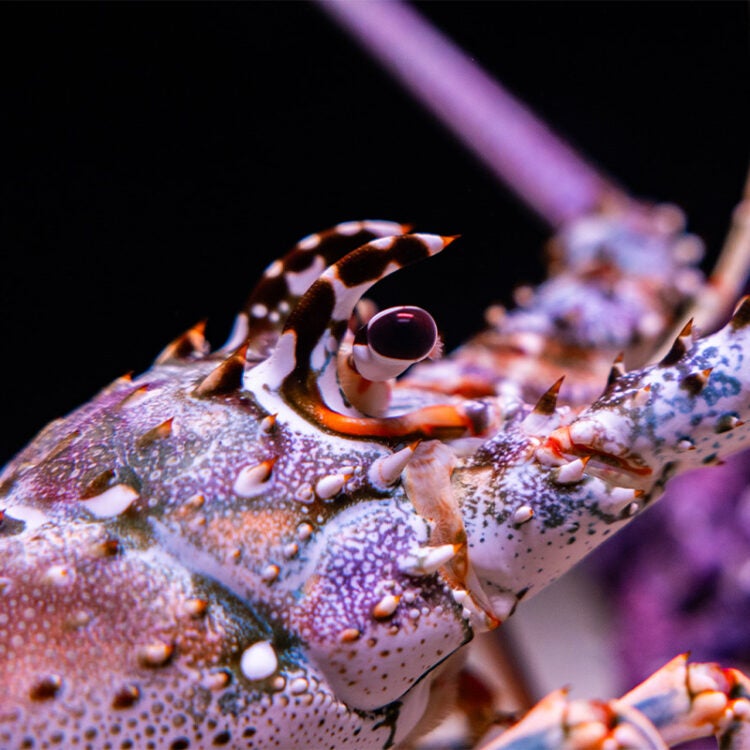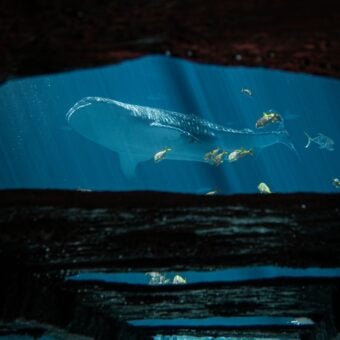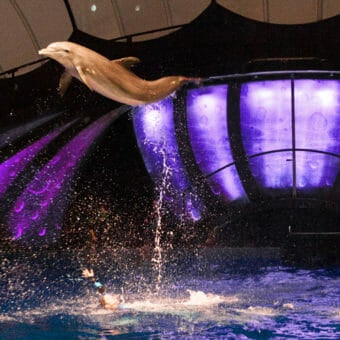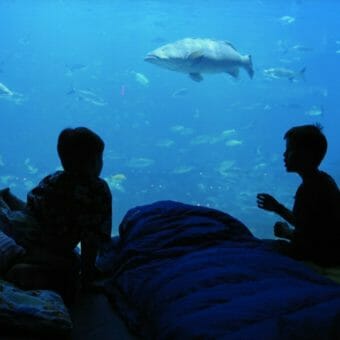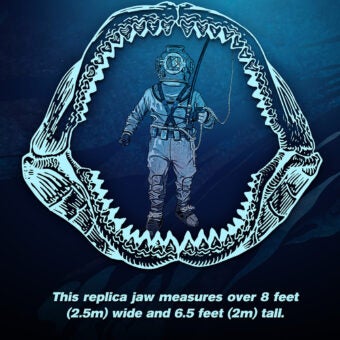-
Size
8 inches (20 cm) -
Diet
Gastropods, carrion, bivalves, sea urchins and some types of vegetation -
Range
Tropical and subtropical waters of the Atlantic Ocean, Caribbean Sea and the Gulf of Mexico. -
Habitat
Coral reefs
Physical Characteristics
- Striped body, brown or gray to dark red-orange color with cream-colored or yellow spots on the segmented tail. Legs have blue colored stripes.
- Cylindrical carapace is covered with forward-projecting spines and two prominent rostral horns extending above the eyes.
- Compound eyes that can detect orientation, form, light and color.
- Most recognizable characteristic is pair of long antennae covered in short spines, which are used for fighting and defense.
- Can grow up to about 18 inches (46 cm) long. More commonly found at lengths of about 8 inches (20 cm).
- As they grow, spiny lobsters molt, temporarily losing the hard protective carapace (exoskeleton).
- After molting, these lobsters are soft-bodied and very vulnerable to predators for about two days until their new, larger exoskeleton forms over their growing body.
- Name derives from the forward-pointing spines covering the body as protection from predators.
Animal Fact
Female spiny lobsters can release up to 2 million eggs each breeding season.
Diet / Feeding
- Diet consists mostly of gastropods, such as snails and slugs, also carrion (dead animals) found on the ocean floor as well as bivalves, sea urchins and some types of vegetation.
- Nocturnal: stays in its den during daylight hours and emerges for a few hours after dark to forage for food.
Range / Habitat
- Occurs in tropical and subtropical waters of the Atlantic Ocean, Caribbean Sea and the Gulf of Mexico.
- Found on coral reefs where it hides in crevices and under ledges and coastal waters further offshore to depths of about 295 feet (90 m).
- Inhabits a variety of marine habitats depending on life stage. Includes the open ocean, shallow coastal areas (hard bottom and mangrove habitat) and near-shore reef zones.
Reproduction & Growth
- Spawning occurs between March and August when water temperatures exceed 73F (23C).
- Females carry the bright orange-colored eggs on the underside of the tail until they turn brown and are ready to hatch.
- Larvae drift in the plankton for thousands of miles until they settle in shallow near-shore areas among sea grass and algae beds.
- Solitary until they reach the juvenile stage and begin to congregate in protective near-shore habitats.
Conservation Status
- “Data Deficient” on IUCN Red List.
Additional Information
- Undertakes annual mass migrations from shallow areas to deeper waters in late fall and early winter. Individuals line up single file as they move and use their antennae to maintain contact with the lobster in front of them. As many as 65 lobsters will form a line. Migrations take place both during the day and at night. Some research indicates the spiny lobster uses the magnetic field of the earth to navigate during these movements.
- Popular seafood and commercially fished in the U.S. only in Florida (mostly in the Florida Keys), where approximately 4-5 million pounds are landed annually during each fishing season.

